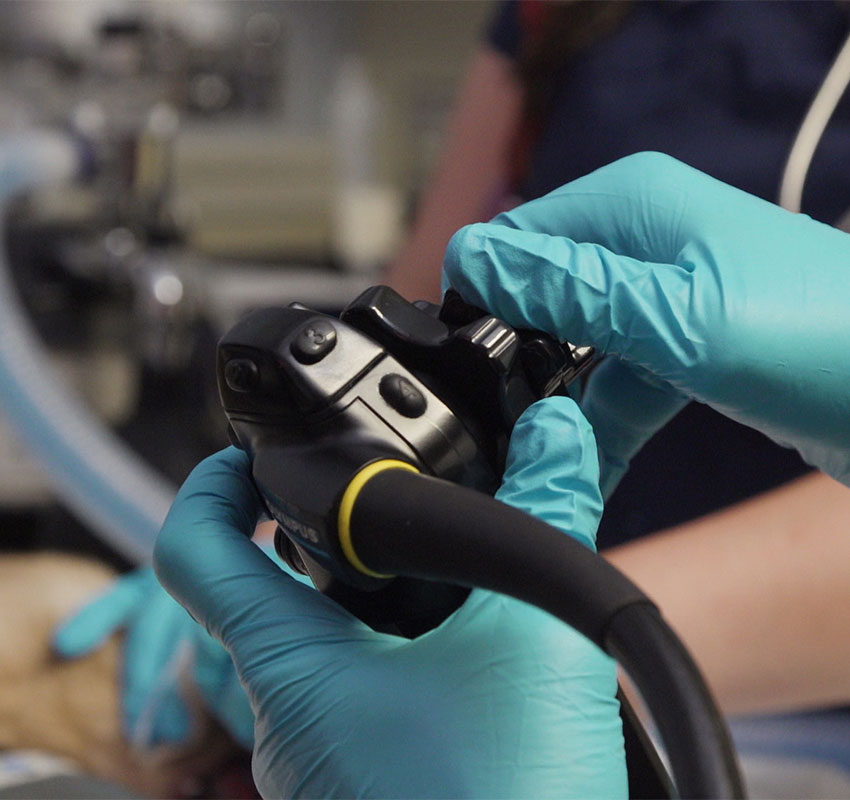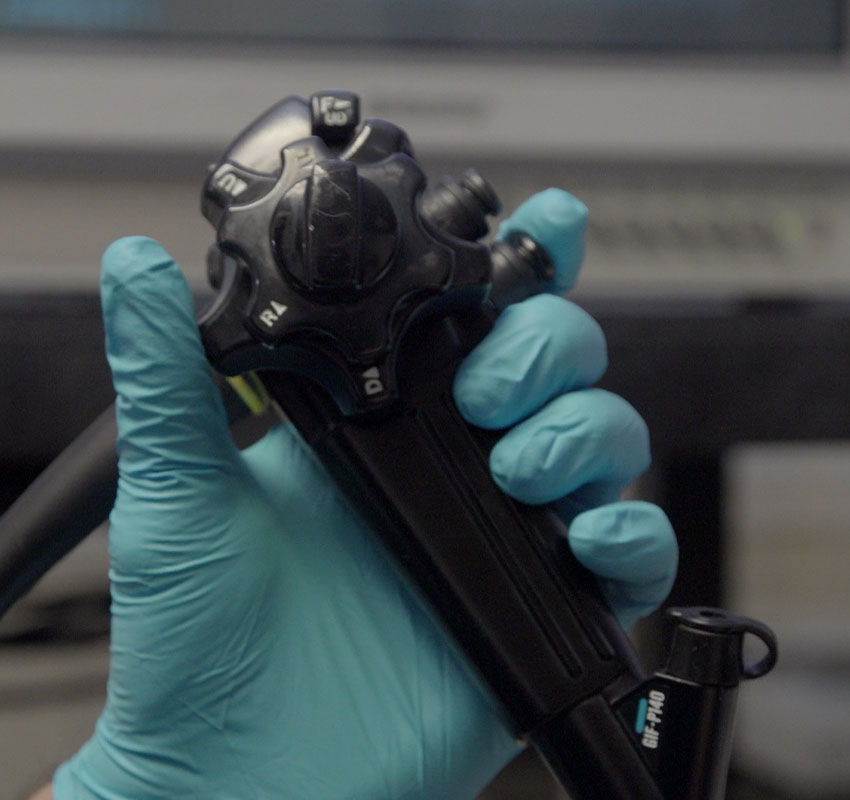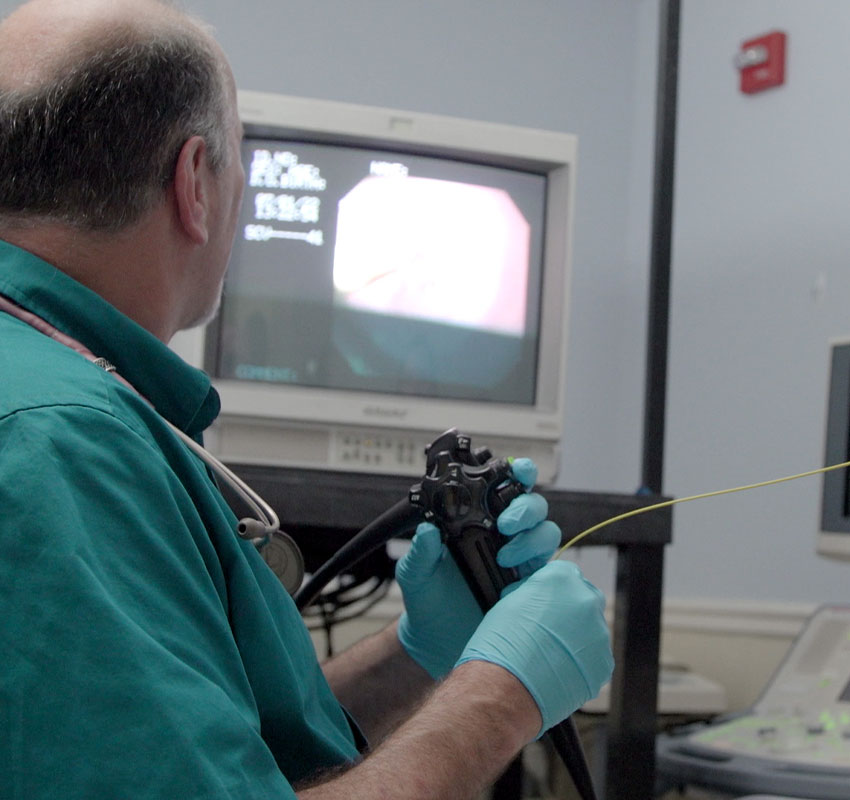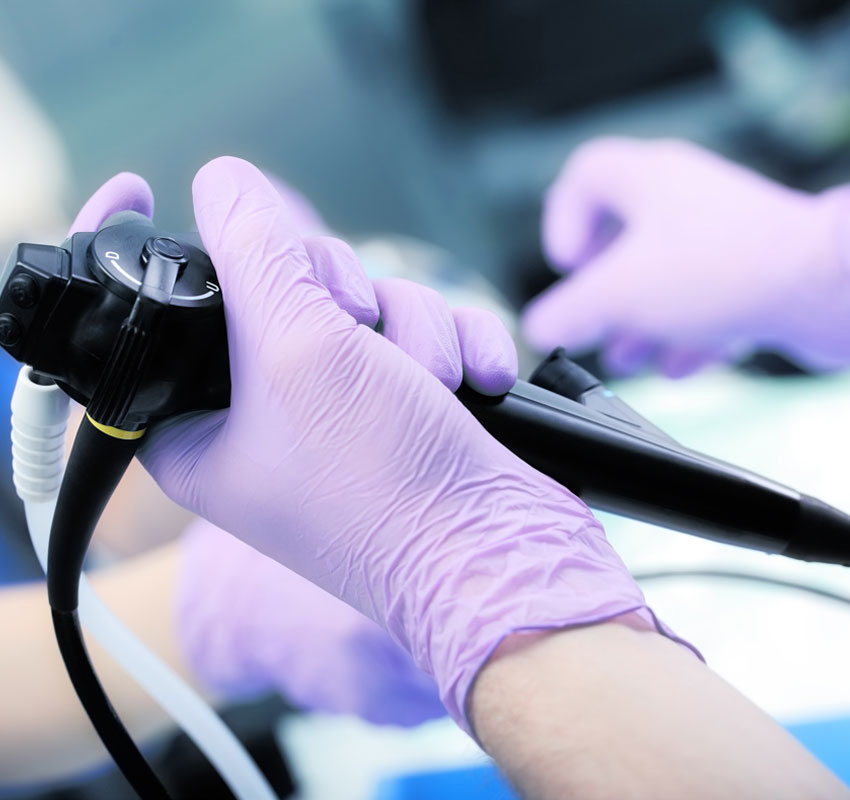A Better Way
An endoscope is an instrument that consists of a camera and lighting system affixed to a flexible tube. Endoscopes can also be equipped with basic tools for foreign body removal and taking samples for biopsy. This often allows us to avoid more invasive surgical procedures. By visualizing the tissues, or obtaining biopsy samples for analysis, the internists are able to obtain a specific diagnosis and determine the best treatment for your pet. Procedures performed include:
- Upper gastrointestinal tract endoscopy (non-surgical foreign body removal and biopsies)
- Colonoscopy
- Bronchoscopy (trachea and bronchi)









